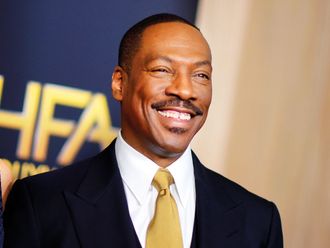
Wuthering Heights by Kate Bush is inspired by Wuthering Heights by Emily Bronte
Perhaps the most famous song with literary references, Kate Bush’s Wuthering Heights relays the tale of Emily Bronte’s gothic novel of the same name. Told through the point of view of Catherine during a ghostly visit to her old house, she calls to her lover, Heathcliff, to let her in through the window. Kate Bush’s operatic voice and quirky dancing conveys the eerie spirit of the scene from chapter three of Wuthering Heights when she is seen by the new tenant, Mr Lockwood.
Fun fact: Kate Bush and Emily Bronte share the same birthday.
We Are the Dead by David Bowie is inspired by 1984 by George Orwell
We Are the Dead is one of many tracks on David Bowie’s Diamond Dogs album that pays homage to George Orwell’s 1984. The title of the track is taken from a recurring line in the novel which simultaneously comments on the repressed “inner and outer parties” as well the protagonist’s impending imprisonment by the thought police.
Fun fact: A great deal of the songs on this album were originally intended for a theatrical production of the novel, but Orwell’s estate denied Bowie the rights.
Atticus by the Noisettes is inspired by To Kill a Mockingbird by Harper Lee
This song by the Noisettes uses To Kill a Mockingbird’s protagonist, Atticus, as a metaphor for fearlessness and integrity. Throughout Harper Lee’s timeless classic, Atticus routinely demonstrates the sort of courage that Shingai Shoniwa sings about in the song of the same title, with a clear reference to the novel in the first line of the song: “To kill a mockingbird is to silence the song that seduces you”.
Banana Co by Radiohead is inspired by One Hundred Years of Solitude by Gabriel Garcia Marquez
In this Gabriel Garcia Marquez-inspired track, Radiohead use imagery from One Hundred Years of Solitude to relay the devastation that banana companies brought to a great deal of Latin American countries in the twentieth century.
Fun fact: This is of one of many references to literature in Radiohead’s catalogue; their 1997 single, Paranoid Android, for example, is named after Marvin, the Paranoid Android from Douglas Adams’ Hitchhiker’s Guide to the Galaxy series.
Hurricane by Thirty Seconds to Mars takes some inspiration from The Raven, by Edgar Allan Poe
Poe’s famous narrative poem The Raven tells the tale of a man who, plagued with the memories of a dead woman called Lenore, is visited by a talking raven in the dead of the night. Although Hurricane was not explicitly written about The Raven, the conclusion of the uncensored director’s cut of the music video for the single release directly quotes the following lines of the poem: “Deep into that darkness peering, long I stood there wondering, fearing, doubting, dreaming dreams no mortal ever dared to dream before”. Despite the fact that Hurricane doesn’t take its lyrical influence from Poe, themes from The Raven such as anxiety, death and lost love are echoed in it, which probably explains why it makes such a good fit with the music video!
Firework by Katy Perry is inspired by On the Road by Jack Kerouac
Despite it’s widely parodied opening line - “Do you ever feel like a plastic bag” - the chorus from the smash-hit Firework by Katy Perry has an unlikely source of inspiration: Jack Kerouac’s Beat generation classic, On the Road. Compare the lyrics: “...you just gotta ignite the light and let it shine, just own the night, like the 4th of July. Cause, baby, you’re a firework, come on, show ‘em what you’re worth, make ‘em go, aah, aah, aah, As you shoot across the sky.” ... with this famous quotation from Kerouac’s novel: “The only people for me are the mad ones, the ones who are mad to live, mad to talk, mad to be saved, desirous of everything at the same time, the ones who never yawn or say a commonplace thing but burn, burn, burn like fabulous yellow roman candles exploding like spiders across the stars and in the middle you see the blue centerlight pop and everybody goes, “Awww!”” ... and you can see the similarities.
Fun fact: Katy Perry’s ex-husband, Russell Brand is a huge fan of Kerouac. Katy Perry acknowledged the influence in a red carpet interview at the 2012 Grammy Nominations.
Thieves in the Night by Blackstar takes some inspiration from The Bluest Eye by Toni Morrison
The Bluest Eye’s exploration of the effects of racism and the cultural imposition of European standards of beauty on black people in late 1930s mid-western America (as told through the voice of the main character, Pecola, a little black girl who desperately wants blue eyes) is referenced in the song by the occasional hip-hop duo Mos Def and Talib Kweli. Themes from Morrison’s novel are used throughout the song as a means of echoing those same ideas, but as they applied to the other rappers and the wider African American community in 1998, when Black Star, Mos Def and Talib Kweli’s collaborative album was released.
Ramble On by Led Zepplin is inspired by Lord of the Rings by JRR Tolkien
One of several Led Zeppelin songs said to have been inspired by JRR Tolkien’s epic series, Ramble On is a re-imagining of the journey of Lord of the Rings characters Sam and Frodo. In this 1969 classic, a woman, and not the infamous ring, is the object of the narrator’s obsessions. In the second verse for example, lead vocalist Robert Plant sings: “Twas in the darkest depths of Mordor, I met a girl so fair, but Gollum and the evil one, crept up and slipped away with her.”
Fun Fact: Robert Plant’s dog, Strider, was allegedly named after Lord of the Rings character Aragorn, who is referred to by the same name at various points in the series.
Sympathy for the Devil by the Rolling Stones is inspired by The Master and the Margarita by Mikhail Bulgakov
Mikhail Bulgakov’s surreal, anti-Stalinist satire played a part in inspiring this Stones staple. In parts of Sympathy for the Devil, Mick Jagger takes on a voice similar to that of The Master and the Margarita’s devilish protagonist, mirroring the opening of the novel in which Satan, disguised as a mysterious, sophisticated figure, approaches two men in 1930s Russia, who are debating the existence of Jesus Christ.
Fun fact: Mick Jagger names nineteenth-century poet Charles Baudelaire as another source of inspiration for Sympathy for the Devil.
Song for Clay by Bloc Party is inspired by Less Than Zero by Bret Easton Ellis
Bret Easton Ellis’s coming of age memoir is a fitting allusion for Song for Clay by broody indie band, Bloc Party. Often compared to J.D. Salinger’s angsty bildungsroman, The Catcher in the Rye, Less Than Zero follows the experiences of the main character, Clay when he returns home to Los Angeles during his winter break from University in the 1980s. In Bloc Party’s Song for Clay, references to the book’s themes of youth, overindulgence and Ellis’s exploration of the pervasiveness of early MTV culture - which, similar to social media today, had a huge impact on teenagers in the 1980s - are present in almost every line.
Fun Fact: Less Than Zero was reportedly named after a Elvis Costello’s 1977 song of the same name.
— guardian.co.uk (c) Guardian News & Media Ltd, 2016












